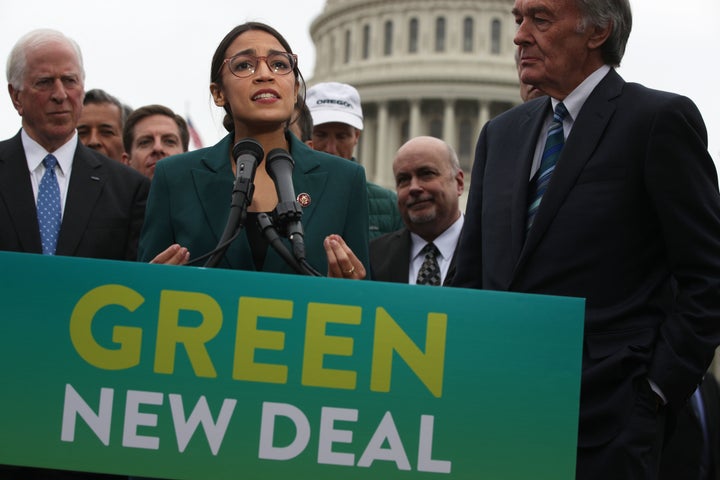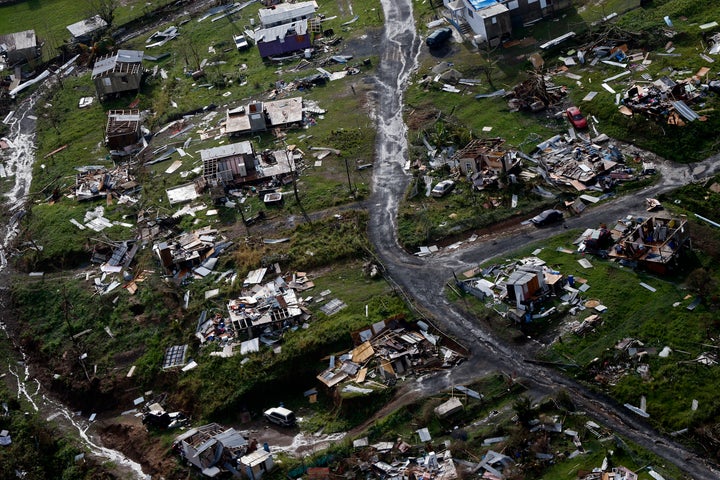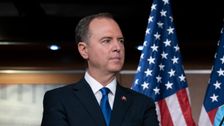
SAN JUAN, Puerto Rico ― Even a little rain threatens Lucy Cruz with what feels like biblical wrath.
When the skies open up ― as they often do ― the Caño Martín Peña, a nearly four-mile canal that connects San Juan Bay to two lagoons in the middle of ’s sprawling capital city, floods into her neighborhood. And with the floodwaters come rats, trash and human feces, flowing through the winding streets. Cruz is one of 26,000 people who live in the communities ― some of the city’s poorest ― that nestle along the channel.
The canal is a literal cesspool. The fecal bacteria there in concentrations of 1.5 million colonies per 100 milliliters of water, which is 7,500 times the level considered safe. Asthma rates for children under 5 living near the canal are twice the average for the rest of Puerto Rico. The that the likelihood of suffering diarrheal diseases and mosquito-borne dengue infections surges the closer someone lives to the channel.
The risk of floods increases as raises sea levels and exacerbates storms, and it threatens the nearby Luis Muñoz Marín International Airport, a vital hub for people and goods on an island dependent almost entirely on imports from the mainland.
The solution to the problem is straightforward: The canal needs to be dredged.
Yet Senate Republicans nixed money earmarked for the canal during the latest row over relief funding as President Donald Trump launched new attacks on Puerto Rico, accusing the debt-strangled territorial government of abusing disaster aid. The canal had issues before hurricanes Irma and Maria made landfall in September 2017, but the Federal Emergency Management Administration’s rules limit disaster funds to rebuilding what was destroyed, not making improvements. And as it is, that funding is just trickling in a year and a half after the storms, and the channel waits in a long line of infrastructure in need of upgrades.
The fate of the canal, say advocates and policymakers, shows exactly why the United States needs a Green New Deal. Puerto Rico’s high unemployment rate and natural affinity for renewable energy already match up with the idea of a national plan to ramp up clean energy manufacturing and provide millions of good-paying jobs. But the Green New Deal’s promise of salvation for impoverished communities at risk from extreme weather and sea level rise is what fits so well with this trash-strewn channel.
The Caño Martín Peña is a perfect example of a long-neglected capital project in a historically disadvantaged area that faces bigger risks as the world warms. The canal needs public works funding and planning to protect San Juan from climate change. The locals need good-paying jobs. And lawmakers in Washington need a testing ground for an expansive program to safeguard Americans against the travails of worsening global warming and poverty.

The Green New Deal is a nascent effort. In February, Rep. Alexandria Ocasio-Cortez (D-N.Y.) and Sen. Ed Markey (D-Mass.) released a joint resolution staking out the core beliefs behind the initiative. Since then, think tanks and policy architects on Capitol Hill have been hard at work drafting policy and defending the resolution against blistering, misinformation-filled Republican attacks. But in Puerto Rican neighborhoods like Martín Peña, the movement takes on a new urgency.
“It’s not a theory in Puerto Rico, it’s happening,” Puerto Rican Gov. Ricardo Rosselló told HuffPost. “We are feeling these effects now.”
An Unnatural Disaster
Hurricane Maria’s extreme rainfall and violent winds offered what scientists said was a preview of the kinds of storms that are likely to strike more often as ocean and air temperatures rise. And studies show the has already slowed by as much as 20% in the North Atlantic, causing sustained damage.
But it’s a misnomer to call the deadliest storm in modern American history, with a death toll nearly twice that of 2005’s Hurricane Katrina, a natural disaster. The worst damage occurred in part because of decisions made by human beings.
Puerto Rico’s infrastructure wasn’t built to withstand the roughly two feet of rain that Maria dumped in just 24 hours. The vast majority of the official death toll of 3,057 people died in the days and weeks after the storm, when impassable roads, supply shortages and lack of electricity cut off access to basic health care and clean water, according to a that actually projected a much higher death toll of 4,645. The storm’s 175-mile-per-hour winds left the island’s aging electrical grid in tatters and caused the second-longest blackout in world history.
The crisis began well before the storm. The island fell deep into debt during the late 1990s after President Bill Clinton phased out tax exemptions that lured manufacturers, particularly drugmakers, to the island. The companies began leaving, taking with them lucrative jobs. Puerto Ricans started departing to the mainland to find work, shrinking the island’s tax base.
Yet one exemption remained in place ― tax-free municipal bonds on which Puerto Rico, as a territory of the United States, offered handsome and reliable returns. With less and less tax revenue, Puerto Rico issued more and more debt to pay for basic upkeep of schools, roads and law enforcement, earning it a reputation as the “.” That came to a screeching halt in 2013 as Wall Street firms started demanding that Puerto Rico pay back its roughly $74 billion in debt.

Between that $74 billion and another $49 billion in unfunded pension obligations, the island was in an economic death spiral. In mid-2016, President Barack Obama signed into law the Puerto Rico Oversight, Management, and Economic Stability Act ― known by its acronym, Promesa, which is Spanish for “promise.” It put an unelected board in place to oversee the territory’s finances. In mid-2017, amid the struggle to recover and nasty fights with creditors, Puerto Rico declared bankruptcy.
Infrastructure maintenance fell to the wayside. The electrical grid ― which had been built out in the 1950s during Operation Bootstrap, an economic development program modeled after the New Deal ― relied on aging elevated transmission wiring that, in a place as vulnerable to storms as Puerto Rico, ought to have been buried. Power generation came mainly from oil-burning plants that were dependable customers for mainland oil producers but left Puerto Ricans paying nearly double the average American utility rate. While many homes were built with concrete to withstand storms, such construction standards were by no means widely enforced. Sewage systems and roads were not prepared to withstand a major hurricane’s deluge of rainwater and nine-foot coastal storm surge.
That makes Puerto Rico a sobering example of climate vulnerability and the unevenly distributed impacts of global warming. Despite emitting relatively low levels of greenhouse gases and benefiting so peripherally from its imperial master’s years of coal- and oil-fueled prosperity, Puerto Rico stands to suffer the worst effects of climate change. It’s an island, making sea level rise a significant threat. Then there’s its location, close to the equator and in a region known as Hurricane Alley.
But many of those problems are easily recast as reasons that Puerto Rico is a logical place to test Green New Deal-style policies.
The Green New Deal calls for generating as much of the nation’s power as possible from renewable sources over the next decade. On most days, Puerto Rico is soaked in sun and blown by ocean winds, and islands are generally considered ideal testing grounds for microgrid technologies that allow communities to generate their own power with renewables and batteries. The Green New Deal outlines incentives to spur electric vehicle and clean energy manufacturing. Puerto Rico, once a vibrant manufacturing hub, has the factories and workforce needed to get those industries up and running quickly. The Green New Deal promises to guarantee federally backed union-wage jobs for millions. Puerto Rico’s unemployment rate was still in February, over double the national average.
The list goes on. Puerto Ricans living in damaged homes and the island’s could benefit from the Green New Deal’s potential to build millions of affordable public housing units. Puerto Rico’s paltry 10.7 miles of rail lines give a real shine to the Green New Deal’s promise of increased investment in trains. Puerto Rico’s dependence on imports for 85% of its food, despite once being the breadbasket of its corner of the Caribbean, adds allure to the Green New Deal’s goal of breaking up agricultural monopolies and spurring a new era of local family farming.
At a moment when austerity and privatization are the U.S. government’s answers to Puerto Rico’s debt and infrastructure crises, the Green New Deal proposes an alternative approach that would expand the commons.
“Puerto Rico is the perfect place to do this for many reasons,” said Nelson Colón, the chief executive of the Puerto Rico Community Foundation, which is overseeing an effort to build community-owned solar cooperatives across the territory. Not least of those reasons, he said, is the fact that “Puerto Rico has been subject to perhaps the most brutal inequality.”
‘Puerto Rico Should Be The Template’
Even the Trump administration seems to recognize that Puerto Rico’s current trajectory isn’t sustainable. The EPA said it is hamstrung by rules dictating which projects disaster relief can fund.
“By definition, recovery money is not supposed to go to” upgrades, said Pete Lopez, the EPA’s regional administrator for Puerto Rico. “But we’re trying to do creatively as much as we can.”
He called on Congress to pass legislation that ramps up funding. “Ultimately, we need legislative, statutory and regulatory resource allocation,” Lopez said.
That seems far off. The best legislative package introduced so far came in November 2017, when Sen. Bernie Sanders (I-Vt.) proposed a bill to spend $146 billion on a “Marshall Plan” to rebuild Puerto Rico with renewable energy and climate-prepared infrastructure.

But the bill went nowhere. And similar legislation would face daunting opposition today. Republicans in Congress overwhelmingly oppose efforts to rebuild Puerto Rico to rely on renewables, instead laying out plans to make the island what described as a “theme park for fossil fuel corporations.” At a House hearing in April on the proposed privatization of the publicly owned Puerto Rico Electric Power Authority, Republican lawmakers touted the idea of building new natural gas import facilities and called any 100% renewable energy plan “.”
A compromise is not impossible. Puerto Rican officials say it’ll be years before the island could feasibly meet all its electricity needs with renewables, and natural gas investments could be paired with carbon capture systems that demonstrate how the technology works on a larger scale, said Greg Carlock, the researcher behind the Green New Deal blueprint that the Data for Progress think tank published last year.
“Puerto Rico could be a demonstration island to see how all this new technology can be deployed as we watch it and we learn from it,” Carlock said. “Puerto Rico should be the template for what a low-carbon society looks like.”
The GOP’s to the Green New Deal, by contrast, offer little for the territory. The “Green Real Deal” that Rep. Matt Gaetz (R-Fla.) proposed last month made no reference to Puerto Rico. Nor did the clean energy “Manhattan Project” that Sen. Lamar Alexander (R-Tenn.) put forward. Neither lawmaker responded to requests for comment about how their proposals would help Puerto Rico specifically.
At a moment when austerity and privatization are the U.S. government’s answers to Puerto Rico’s debt and infrastructure crises, the Green New Deal proposes an alternative approach that would expand the commons.
Momentum behind a Green New Deal is building in Puerto Rico. Last week, Rosselló signed a bill mandating that the island generate 100% of its electricity from renewables by 2050 ― up from just 2% today. Sunrise Movement, the grassroots group whose protests propelled the Green New Deal into mainstream politics on the mainland late last year, launched its first local chapter in Puerto Rico last month. And a series of regulatory tweaks over the past year are making it easier for community-owned solar and battery projects to get off the ground.
Green New Deal proponents are also making Puerto Rico a battle cry. Sanders named San Juan Mayor Carmen Yulín Cruz as the co-chair of his presidential campaign. Other 2020 Democratic presidential hopefuls ― including former Housing and Urban Development Secretary Julián Castro, former Texas Rep. Beto O’Rourke and South Bend, Indiana, Mayor Pete Buttigieg ― have backed statehood for Puerto Rico and made early campaign stops here. During an MSNBC town hall on the Green New Deal last month, Ocasio-Cortez compared the plight of the island, from which her family hails, to the 9/11 terror attacks that killed thousands in her home city.
“Thousands of Americans died in one of the largest terrorist attacks on U.S. soil. And our national response ― whether we agree with that or not ― our national response was to go to war in one, then eventually two countries,” she said. “Three thousand Americans died in Puerto Rico in the aftermath of Hurricane Maria. Where’s our response?”
Still, cynicism and impatience are hard to avoid here.
David Chaveź, who runs a boutique shop in Old San Juan and lives in the artsy haven of Santurce, pointed out a streetlight that had fallen over during the storm as we walked down Avenida Juan Ponce de León one night in late February. For many residents of Puerto Rico like him, it’s difficult to imagine a world where public investments focus on improvements rather than just triage.
“The hurricane put a bigger tear in the hole,” Chaveź said over dinner in his neighborhood. “This is the path that’s been set for Puerto Rico.”
Two days later, Cruz ― sitting at a conference table at ENLACE, a local nonprofit dedicated to helping the people of Martín Peña ― removed her thick-framed glasses and feigned collapse from exhaustion as I listed some of the core proposals in the Green New Deal.
“It sounds great, so when will this be law?” she said, at once letting out a chuckle and a sigh. “We have been overlooked for such a long time.”


